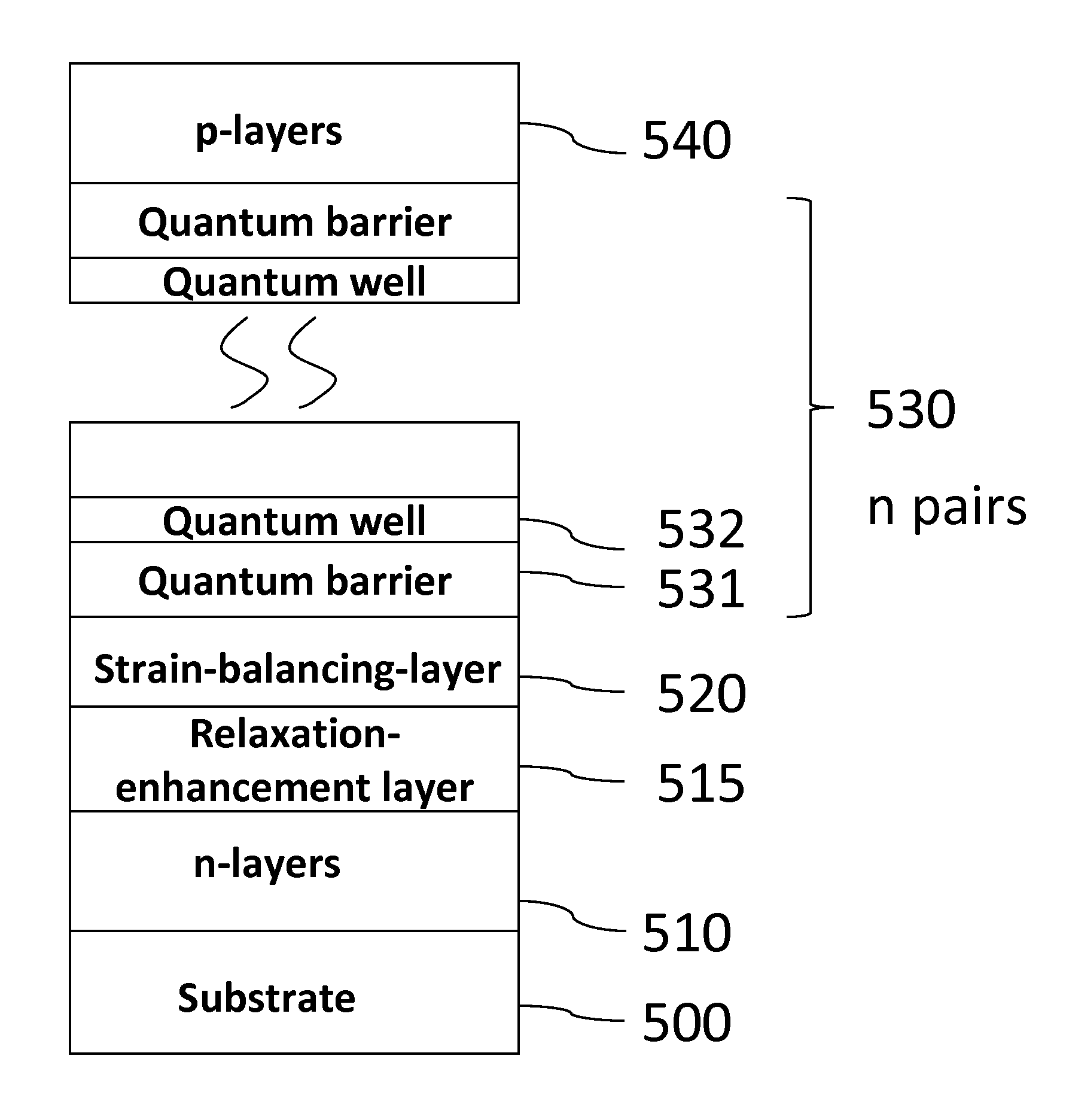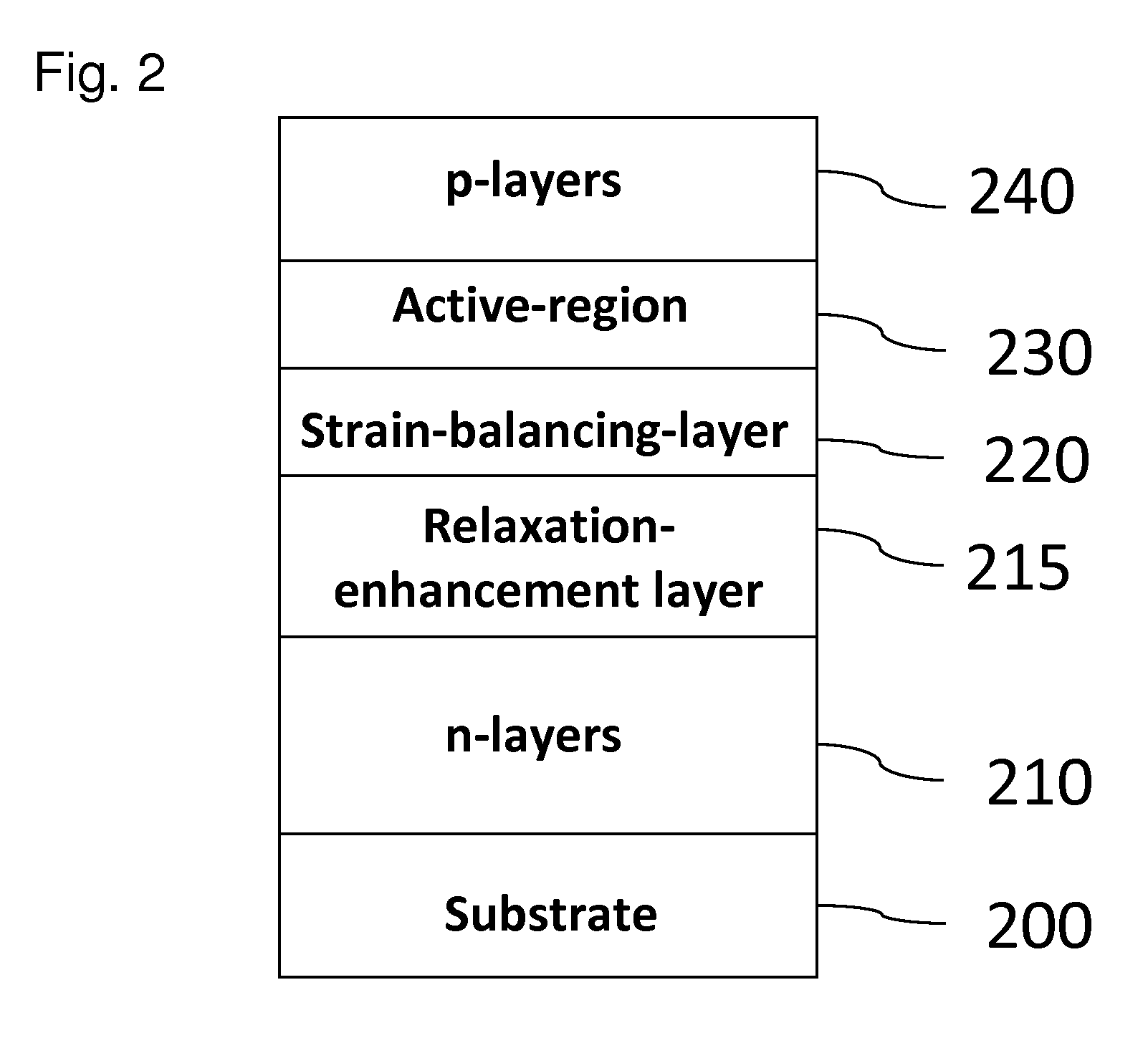Strain balanced light emitting devices
a light-emitting device and strain-balance technology, which is applied in the direction of semiconductor/solid-state device manufacturing, semiconductor devices, and electrical equipment, can solve the problems of not every injected electron and hole can recombine with each other, reduce iqe, and reduce iqe, so as to enhance the flexibility of proper device design and improve the performance of light-emitting devices
- Summary
- Abstract
- Description
- Claims
- Application Information
AI Technical Summary
Benefits of technology
Problems solved by technology
Method used
Image
Examples
Embodiment Construction
[0038]In the prior art light-emitting devices, the lattice-constant of the active-region is determined by the n-type base layers and there is no freedom to adjust the active-region lattice constant for a better performance. FIG. 1 shows a schematic cross-sectional structure of a prior art light-emitting device, consisting of a substrate 100, an electron-supplier n-type contact layer(s) 110, an active-region 120, and a hole-supplier p-type layer(s) 130.
[0039]The present invention proposes a strain-balancing layer under the active-region in a light-emitting device for improved device performance. In the embodiments for LEDs, as schematically shown in FIG. 2, the strain-balanced structure includes a substrate 200, an electron injection layer (n-layer) 210, a relaxation-enhancement-layer 215, a strain-balancing layer 220, an active region 230, and a hole-injection layer (p-layer) 240. The strain-balancing layer 220 serves as lattice template to realize a strain-balanced active-region.
[0...
PUM
 Login to View More
Login to View More Abstract
Description
Claims
Application Information
 Login to View More
Login to View More - R&D
- Intellectual Property
- Life Sciences
- Materials
- Tech Scout
- Unparalleled Data Quality
- Higher Quality Content
- 60% Fewer Hallucinations
Browse by: Latest US Patents, China's latest patents, Technical Efficacy Thesaurus, Application Domain, Technology Topic, Popular Technical Reports.
© 2025 PatSnap. All rights reserved.Legal|Privacy policy|Modern Slavery Act Transparency Statement|Sitemap|About US| Contact US: help@patsnap.com



